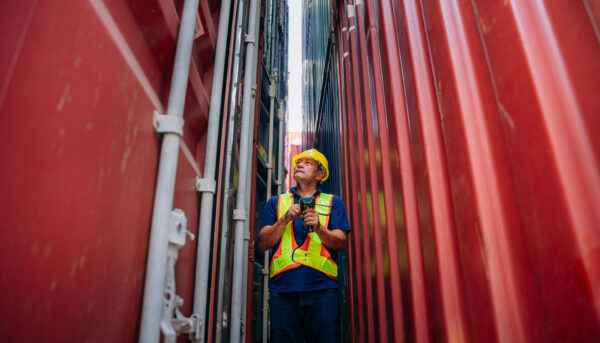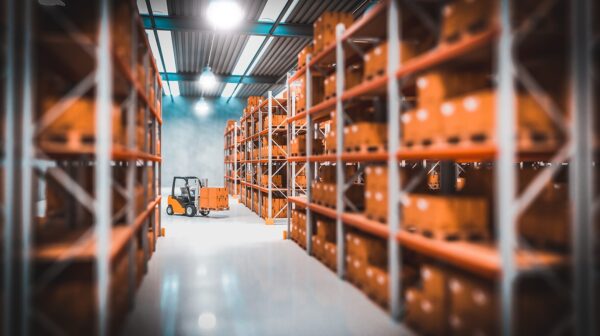Sustainability and Canada’s environmental impact has been emerging as a growing priority for all industries and business across Canada, including the transportation and logistics industry. As a result, there has been an increasing pressure for businesses to become more “environmentally-friendly” and to market their efforts and successes in that regard.
Green logistics trends
“Green logistics” is an emerging consideration within a number of Canada’s bourgeoning legal and regulatory frameworks, which refers to the implementation of environmentally friendly technologies and practices with a view to minimize the environmental impacts of transportation and logistics activities while simultaneously maximizing efficiency and reducing costs throughout the entire supply chain.
The following are just some examples of regulatory compliance frameworks that have been, or are being, implemented in Canada in which “green” logistics is top of mind:
- Emissions standards for vehicles
Transport Canada sets emission standards for nearly all vehicles in the country with the goal of reducing greenhouse gas emissions and air pollution. They are also meant to promote the adoption of more fuel-efficient vehicles. These standards are subsequently regulated by the ministry of Environment and Climate Change Canada.
- Greenhouse gas reporting requirements
To assist regulators with identifying opportunities to reduce harmful emissions, companies who are viewed to be large emitters of greenhouse gases are often required to report their emissions data to the government. For example, under the Greenhouse Gas Pollution Pricing Act (Canada), any road carrier with interjurisdictional business activities using a specified commercial vehicle in particular provinces must register, report the amount of fuel used and kilometres travelled in certain jurisdictions, and pay tax on such fuel.
- Environmental impact assessments
An environmental impact assessment may be required when planning and executing projects relating to infrastructure such as constructing ports, rail terminals and distribution centres. Broadly, they are used to assess and evaluate a project’s potential environmental effects. These assessments also assist with ensuring that these projects are carried out in a sustainable fashion and comply with the regulatory requirements.
Environmental claims and “greenwashing”
Consumers and investors are paying more and more attention to the lifecycle of products including whether goods are being transported by “eco-friendly” means or stored in “green” facilities. This has resulted in a financial incentive and pressure for companies throughout the supply chain to respond to these eco-friendly consumer trends. Such trends, combined with the foregoing focus on sustainability and “green logistics” have resulted in a heightened risk of overzealous advertising and the promotion of environmental claims which can be misleading, unsubstantiated and/or inaccurate.
“Greenwashing” is the term used when companies make exaggerated, unsupported, false or deceptive statements about the environmental benefits of a product or service. It can take the form of claims, adjectives, colours and symbols that make a product or a business seem more eco-friendly than it actually is.[1] As the financial incentive for companies to become more environmentally-friendly grows, so does the risk of “greenwashing.” For this reason, before making environmental claims about their business, members of the transportation industry should ensure they understand the potential legal risks that come from making these sorts of claims.
Legal framework – Environmental claims
The Competition Act
In Canada, the Competition Act (the “Act”) is the primary legislation that regulates and prohibits making false or misleading representations to the public. The Act is regulated by the Competition Bureau (the “Bureau”) which is an independent enforcement agency that monitors and protects Canadian consumers from unfair competition practices. Claims made regarding the environmentally beneficial qualities or characteristics about a product or a service (known as environmental claims) fall under this protection and enforcement scheme.
All product and services claims made to the public in Canada must be true, substantiated, and must not be materially misleading.[2] When assessing a representation, the Bureau will look at the literal meaning of the representation, and also the ‘general impression’ that a credulous and inexperienced consumer would have when considering the representation.[3] The general impression is viewed from the perspective of an inexperienced and credulous consumer, which has been further defined by the Supreme Court of Canada in Richard v. Time Inc. et al as someone who is not “a reasonably prudent and diligent person, let alone a well-informed person… [and is] someone who is not particularly experienced at detecting falsehoods or subtleties found in commercial representation”.[4]
The Bureau’s guidelines
In 2008, the Bureau worked with the Canadian Standards Association to publish “Environmental Claims: A Guide for Industry and Advertisers” (the “Guidelines”), which provided guidance to companies on how to make proper use of environmental claims, without contradicting the Act.[5] However, the Guidelines were archived in November 2021, along with a statement that the Guidelines no longer represented the Bureau’s current views on such claims. In December 2021, the Bureau released a more general set of materials on “Environmental Claims and Greenwashing,”[6] while also leaving the Guidelines accessible for reference.
Environmental claims in the logistics industry
Those involved in the logistics industry should remain vigilant when making representations, claims and other advertising regarding their environmental initiatives, whether to the public or as part of their contractual representations and covenants.
For example, aspirational claims such as promises to have an “all-electric fleet by 2040” or something similar should be made with caution. When making forward-looking or aspirational claims about the environmentally-friendly aspects of the business, the company should, at a minimum, have a plan in place with actionable steps as to how this goal will be accomplished. The business should also ensure that it is meeting any milestones and actively monitoring progress to ensure such claims remain accurate.
In general, broad, vague, and unsubstantiated claims should be avoided because they leave a much stronger chance of inadvertently engaging in greenwashing. Statements such as “green warehousing” or “eco-friendly transportation” are likely to fall into this category since words like “green” and “eco-friendly” could have different meanings and accordingly, may be difficult to properly substantiate.
It is also important to look at the supply chain as a whole, including the nature of a logistics company’s suppliers’ businesses. For instance, if a company were to say that its vehicles are “environmentally-friendly,” yet elements of the upstream vehicle production produced significant emissions, such claim could be misleading. A more specific claim about the nature of the vehicles would likely be more appropriate.
Contractual matters
Environmental claims may ultimately become engrained in contracts with customers as well and not just in public-facing advertising. This could be in the form of representations or covenants that require a logistics service provider to meet future obligations, such as utilizing an all-electric fleet by a certain date, maintaining “net-zero emissions” throughout a contract’s duration, or focusing on sustainable business practices.
Those involved in the logistics industry should ensure that any representations or promises made in customer contracts are as precise as possible, accurate, and if forward-facing, then they should also be realistic and supported by an actionable plan. Otherwise, it is possible that if a misrepresentation is made or a covenant breached, the customer may have cause to terminate the contract or seek indemnification if it suffers losses, depending on the other terms of the contract.
Ultimately, logistics businesses should be careful about what they are claiming from an environmental perspective, and what they are agreeing to in their contracts.
Key takeaways and advice
Considering regulatory frameworks aimed at responding to environmental concerns is a way to invest in a business’s future operations. While navigating the crossroads of environmental sustainability and regulatory compliance can be challenging, it also presents a plethora of opportunities which could allow businesses to ‘future-proof’ their operations in light of our rapidly changing regulatory landscape and industry trends pertaining to environmental sustainability.
However, when making environmental claims and representations to the public or in customer contracts with respect to the business’ environmental sustainability efforts, logistics service providers should remember to:
- Be specific. Stay away from any broad or vague claims, but rather make specific and qualified claims about the environmental benefits of the product or service.
- Be clear. Consider not only the literal meaning and interpretation, but also the general impression of the representation as a whole.
- Be substantiated and verifiable. Claims should be properly and adequately supported before being made.
- Be alert. Given the dynamic nature of the regulation right now, keeping on top of the news, and the regulatory landscape is important.
Should you have any questions regarding environmental claims and trends in the transportation industry, please contact any member of Miller Thomson’s Transportation and Logistics team or Marketing and Advertising team.
[1] Competition Bureau Canada, “Be on the Lookout for greenwashing” (January 26, 2022), online: https://www.canada.ca/en/competition-bureau/news/2022/01/be-on-the-lookout-for-greenwashing.html
[2] Competition Act, s.52(2), s.74.01(1).
[3] Competition Bureau Canada, “The general impression test” (January 20, 2022), online: https://ised-isde.canada.ca/site/competition-bureau-canada/en/deceptive-marketing-practices/types-deceptive-marketing-practices/general-impression-test; and section 74.01(4) of the Act.
[4] Richard v. Time Inc., 2012 SCC 8 at para 71.
[5] Competition Bureau Canada and Canadian Standards Association, “Environmental Claims: A Guide for Industry and Advertisers” (June 2008), online: https://ised-isde.canada.ca/site/competition-bureau-canada/en/how-we-foster-competition/education-and-outreach/publications/environmental-claims-guide-industry-and-advertisers#s1_1
[6] Government of Canada, “Environmental claims and greenwashing” (December 2, 2021), online: https://ised-isde.canada.ca/site/competition-bureau-canada/en/environmental-claims-and-greenwashing#sec04




